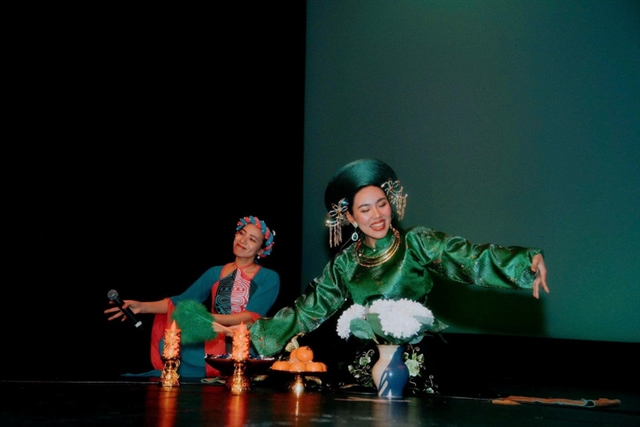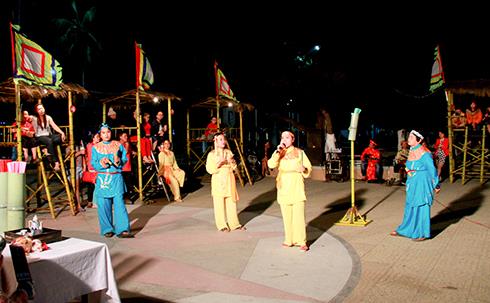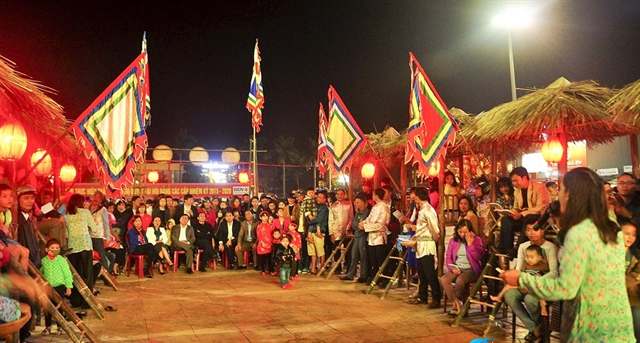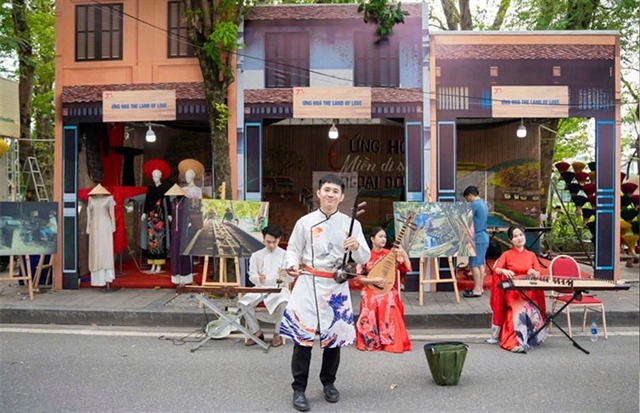 Life & Style
Life & Style

Authorities in the central coastal province of Khánh Hòa have approved a project to preserve and promote the values of bài chòi (folk singing) in the province.

KHÁNH HÒA — Authorities in the central coastal province of Khánh Hòa have approved a project to preserve and promote the values of bài chòi (folk singing) in the province.
The People’s Committee announced this week that the three-year project aimed to improve public awareness and mobilise society to participate in protecting and promoting the values of the folk art, which is an intangible national heritage.
The project will look at feasible solutions for six localities across the province: Vạn Ninh, Diên Khánh and Cam Lâm districts, Ninh Hòa Town and the cities of Nha Trang and Cam Ranh.
A report from authorities said the solutions should ensure the long-term and sustainable cultural heritage values of the art.
The provincial People's Committee has requested the six localities to actively participate in the project by promoting the folk music.
It has also urged localities to integrate performances of bài chòi with others cultural activities such as music competitions, art shows and festivals in order to create more performance environment for artists, at the same time explore more talents, timely rewards and encourage individuals and organisations to participate in and contribute to the project.
The province has set out seven specific tasks to implement the project of which the Khánh Hòa Department of Culture and Sports has been assigned for leading and coordinating with relevant departments, agencies, and authorities of districts, towns and cities to organise the implementation and take responsibility for reporting the results ensuring the efficiency of the project.

Specifically, cultural authorities in Khánh Hòa should restore existing works, film documentaries and record DVDs of all types of bài chòi performances.
They will also publish books about the history of bài chòi including dramas, tales and artworks by local artists.
As part of the project, Ninh Hòa Town will be a pilot site for regular folk games at weekends and festivals, including Tết (Lunar New Year) and other national celebrations.
Khánh Hòa has vowed to complete a collection of performance documents, artefacts, drama scripts, tales, musical instruments and costumes for preservation and display at the provincial museum.
The budget for the project is estimated at more than VNĐ6.7 billion (US$300,000) for 2020-23.
Bài chòi is a unique form of folk art and folk games featuring the traditional culture of the central coast region. Local people have developed it into stage performance.
At the end of 2017, UNESCO recognised the art as an intangible cultural heritage of humanity.
The art of bài chòi dates back almost 400 years ago, when Đào Duy Từ, an outstanding mandarin under the reign of the Nguyễn Lords (1558-1777) who later formed the Nguyễn Dynasty (1802-1945) in Huế, created the game to entertain the community during the post-harvest season.
Bài chòi literally means a deck of cards (bài) and bamboo huts (chòi), is half game and half theatre performance. Nine bamboo huts on stilts are erected on a spacious plot in two rows, each made up of four huts for the players. The biggest hut is in the middle, with a wooden stand for the controller of the game.
The art reflects the spirit of human solidarity. All the villagers, both audience members and players, are drawn into a joyful ambiance for the purpose of sharing happiness and solidarity.
Bài chòi is Việt Nam’s tenth cultural practice to receive the title from UNESCO. The art was awarded intangible heritage status thanks to a recreation within a village community.
UNESCO’s recognition confirms the diversified nature of Vietnamese culture, and strengthens the local community by promoting cultural diversity and encouraging communication among individuals, communities and peoples. — VNS




